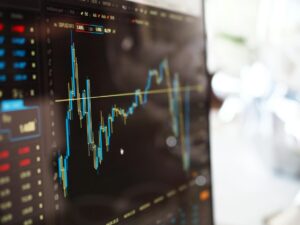Technology
Risk management techniques for effective CFD trading in diverse markets

Trading Contracts for Difference is an exciting way to engage with global financial markets. However, with great opportunities come significant risks. Effective risk management is essential for sustained performance. This article explores practical risk management techniques tailored for trading in diverse markets, offering insights for traders at all levels.
Understanding Risk in CFD Trading
Before exploring strategies, it’s important to understand the unique risks associated with CFD trading. Unlike traditional investing, CFDs allow traders to speculate on price movements without owning the underlying asset. This leverage amplifies potential gains and losses.
For instance, while a 1:10 leverage ratio can magnify profits, it also means that a small unfavourable price change could result in significant losses. Coupled with the volatility of diverse markets, traders must adopt robust risk management techniques to protect their investments.
1. Set Clear Risk Limits
One of the foundational principles of risk management is setting clear limits on how much capital you’re willing to risk per trade. Generally speaking, you should never risk more than 1% to 2% of your entire trading account on a single trade.
Why is this important? Even the most seasoned traders face losses. By limiting risk on each trade, you preserve your capital and give yourself more opportunities to recover from setbacks. Using tools like stop-loss orders ensures that losses are capped at your predetermined level, giving you peace of mind in volatile markets.
2. Diversify Your Portfolio
Diversification is a classic risk management strategy that remains relevant in trading. By spreading your investments across various markets, you reduce the impact of adverse movements in any single asset.
Instead of focusing on forex, consider exploring indices, commodities, or equities. Different markets often have varying volatility and influencing factors, which can help balance your portfolio. However, over-diversification might dilute returns, so aim for a balanced approach.
3. Use Leverage Wisely
Leverage is a double-edged sword in trading. While it allows traders to control larger positions with smaller capital, it also increases exposure to losses. Managing leverage effectively is key to sustainable trading.
Traders should always be cautious about using high leverage. Start with lower leverage ratios, especially if you’re new to trading. As you gain experience and confidence, you can consider adjusting your leverage levels to suit specific strategies or market conditions.
4. Monitor Market Conditions
Markets are dynamic and influenced by countless factors, including geopolitical events, economic data, and investor sentiment. Successful trading requires staying informed about these developments and understanding how they might impact your trades.
For instance, if trading forex CFDs, monitor interest rate decisions, inflation reports, and employment data. Similarly, commodity traders should track supply chain disruptions and weather conditions. By staying proactive, traders can adjust their positions to mitigate risks associated with sudden market movements.
5. Create a Trading Strategy and Follow It
A well-structured trading plan is an essential tool for effective risk management. This plan should outline your trading goals, preferred markets, risk tolerance, and strategies. Importantly, it should also specify entry and exit rules for each trade. Sticking to your plan prevents emotional decision-making, which is often the downfall of many traders. For example, fear or greed might tempt you to hold onto a losing position longer than planned or take excessive risks during winning streaks. By adhering to a disciplined approach, you can maintain consistency and avoid costly mistakes.
6. Take Advantage of Trading Tools
Modern trading platforms, like the ones offered by various brokers, come equipped with various tools designed to support CFD traders. These include risk management features like stop-loss orders, trailing stops, and limit orders. For example, a trailing stop adjusts automatically as the market moves in your favour, locking in profits while limiting losses. Meanwhile, limit orders ensure you enter or exit trades only at your desired price levels. Utilising these tools not only simplifies risk management but also helps traders maintain control over their positions in fast-moving markets.
The Role of Research and Continuous Learning
Staying ahead in a rapidly evolving financial terrain requires ongoing education and research. Whether you’re trading forex, commodities, or indices, understanding market trends and refining your strategies is crucial. Many brokers provide educational resources, such as webinars, tutorials, and market analysis, to help traders stay informed. Taking advantage of these tools can enhance your knowledge and improve your decision-making, ultimately reducing risk in trading.
Risk management is the keystone of successful CFD trading in diverse markets. By setting clear risk limits, diversifying your portfolio, using leverage cautiously, and staying informed about market conditions, traders can navigate challenges with confidence. Additionally, sticking to a well-defined trading plan and utilising modern tools further enhances risk control. While no strategy can eliminate risk entirely, a disciplined and informed approach can significantly improve your chances of success in trading. After all, in trading, protecting your capital is just as important as growing it.














